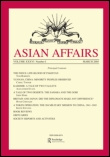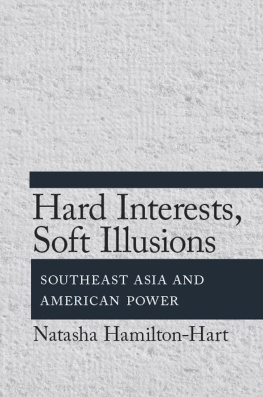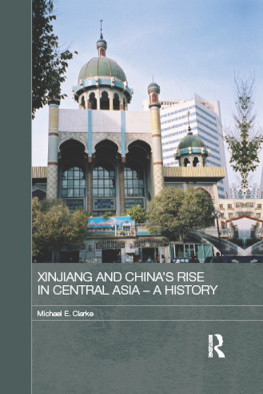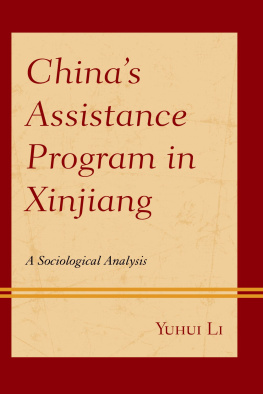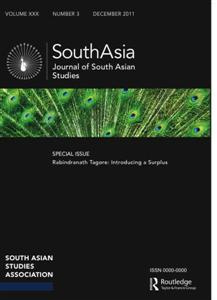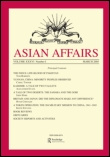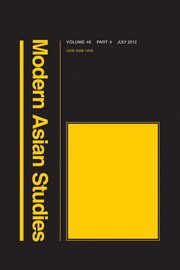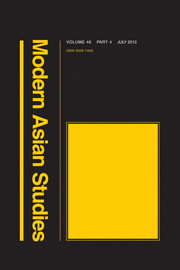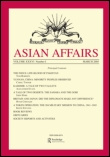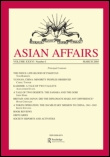The Background of Chinese Aggression Against the Territory of Xinjiang (Eastern Turkestan): The Soviet View
[The following article appeared, in 1983 in the Soviet Uighur (arabic script) publication Biznin Veten (Our Country). According to the document, it is reported by the political correspondent of the Bahtar Agency in Kabul. Biznin Veten is published monthly in Alma Ata in Uighur, Kazak, and Uzbek and is intented for Central Asians living abroad and for the Muslims of Xinjiang. It is translated here to illustrate new themes and new tactics in the ongoing propaganda war along the Sino-Soviet border. Editor]
Muslims of Afghanistan are observing, with great anxiety, the life of the Uighurs, Tajiks, Kazaks, Uzbeks, Kirghiz and their other Muslim brethren inhabiting the vast territory of the Uighur Autonomous Region of Xinjiang in the southwestern part of China. Facts go to prove that, notwithstanding their talk of liberalisation, political leaders of Peking pursue a line that aims at the total destruction of national identity and civilisation of fractions of population established in this region, members who do not belong to the Chinese race proper (the non-Chinese). Having exiled the true owners of this land into the desert, the authorities continuously bring into Xinjiang (that is, Eastern Turkestan) masses of immigrants from the interior of China belonging to the majority Chinese population. In 1949, the Chinese constituted only 6 per cent of the total population of the aforesaid region, while now their proportion has increased to 50 per cent. Peking is planning to raise, to one hundred million, the number of Chinese (belonging to the Han nationality) established in the Autonomous Region, that is in Eastern Turkestan. This would doubtless constitute for local Muslim nationalities which would thus become minorities the danger of absorption through enforced assimilation.
Regarding public education, in view of the policy pursued by the Chinese government authorities, national schools suffer from a shortage of teaching staff. Furthermore, many Muslim families with children of school age do not have the material means to send them to schools. The coarse and offensive attitude of Peking leaders towards the national history and culture of the indigenous population and the specific characteristics and customs of Muslims is sufficient evidence that the objective pursued by them according to the principles of Great Statism is the enforced creation of a purely Chinese nation that Nation of Han. The insolence and violence of the Chinese in Eastern Turkestan drawing support from the armed forces has a significant impact on the material conditions and standard of living of the population. Facts demonstrate that Peking is consciously and intentionally endeavouring to upset the life and economy of Muslim communities, thus endangering their future development. By proceeding with the disorderly cutting down of forests, the Chinese administration destroyed the results of centuries of irrigation. Muslim farmers are forced to work hard and content themselves with small incomes and as a result, the rural families are destitute. Stock breeding (that of cattle, horses, sheep and so on) is ruined because of constant demands of suplies to the capital.
The invasion policy practised by the Chinese government in Eastern Turkestan has to face a justified resistance of the Muslim population conscious of its rights. Thus, in February 1978, incidents that occured in the district of Abat Kashgar and which started by an armed revolt of the population, extended to the provinces of Aksu, Kelpin and Uchturpan. We know that this revolt was repressed ruthlessly by the Chinese army. Shortly afterwards, in 1981, there were new armed encounters between the native population and the Chinese. In this instance, the local population demanded the recognition of their rights to self-government whilst Chinese propaganda laid stress on the happy life of Muslims, thus justifying the total rejection of this claim. The attitude of the Peking government towards Eastern Turkestan clearly betrays its intention of transforming this region into a trustworthy internal front within the framework of their newly adopted wider overture policy towards the Democratic Republic of Afghanistan as well as the Soviet Union. Historical maps published in the Chinese Peoples Republic and also geographical maps in use for some time in high schools list large portions of Afghanistan among territories occupied by China. It is a historical fact that Pekings cartographic ofFensive is bound to be sooner or later transformed into a plain attack. Thus, in 1962, Kashmir, an Indian region measuring 39,000 square kilometres was occupied by Chinese soldiers who had come across Xinjiang.
For three years, the Chinese expansionists have transformed seventy four kilometres of Afghanistans borderland into the foremost front line and wage against our fatherland an undeclared war. Counter-revolutionaries who escape from the Republic, become the tools of Pekings intervention into the internal affairs of the Democratic Republic of Afghanistan. Chinese official specialists turn them into bandits and arm them. These dissidents, (enemies of the [Afgan] Revolution) who had fled from Afghanistan, are being instructed in special barracks and training camps in the territory of Eastern Turkestan. These future fighters for freedom penetrate into Afghanistan where they kill innocent people and destroy schools, mosques, houses and places of work. During the summer of 1981, the police of the Democratic Republic of Afghanistan arrested a group of Maoist members of an organisation known under the name of SAMA. The documents found in their possession and their own confessions proved that their objective was to trouble the peace and order of the country. Acting on the orders of their Peking bosses the bandits attacked the transport installations and works. They were the authors of numerous explosions in industrial centres, in factories. They killed people in surprise attacks. Many of their victims were among the peaceful and unarmed.
The hidden agenda behind Pekings activities directed against Afghanistan is the desire to include the latter into the Chinese sphere of influence so as to draw still nearer to the Indian Ocean and to transform our country into a second Eastern Turkestan. There is no doubt that the heroic struggle of the Afghan people backed by the approval of the whole progressive world will triumph over the despicable intentions of the Chinese.
The frontiers of Turkestan*
ALAEDDIN YALCINKAYA
Turkestan, a Persian name, means 'the land of Turks'. Before discussing its frontiers, it would be useful to discuss the accurate name of this area. Different names are used to describe this area of vital strategic and political importance: on the one hand, Central Asia, Turkestan, Turan, and on the other hand, Soviet Central Asia or Iranian Turkestan, Afghani Turkestan, and Chinese Turkestan. Some of these are synonymous, some, however, different. Especially after the independence of the Central Asian republics, following the collapse of the Soviet Union, the confusion over the use of these names has grown. Nowadays, we have to determine the borders of Turkestan in light of new developments, especially ethno-political developments in this area, where the name of Turkestan has always been used but from time to time its borders have been changed.
In this article I shall try to redefine the term 'Turkestan', which is quite different from the term 'Central Asia', and to designate the frontiers of Turkestan.
Turan and Turkestan
We must first determine which name is suitable for this area, especially now that the terms of Central Asia and Turkestan are interchangeably used, thus everyone may suppose that these two names refer to the same area.
Above all, a name needs some characteristics in order to be generally accepted for historical and cultural realities. Obviously, the necessity of 'being generally accepted' is the main and the most important criterion. Because of this, especially after means of communications have so. advanced, the media has become the biggest determinant. So, to prevent any confusion, it is necessary to determine the original, historical, geographical, and ethnographic terms used by historians and others who are interested in precise terminology.
Next page
